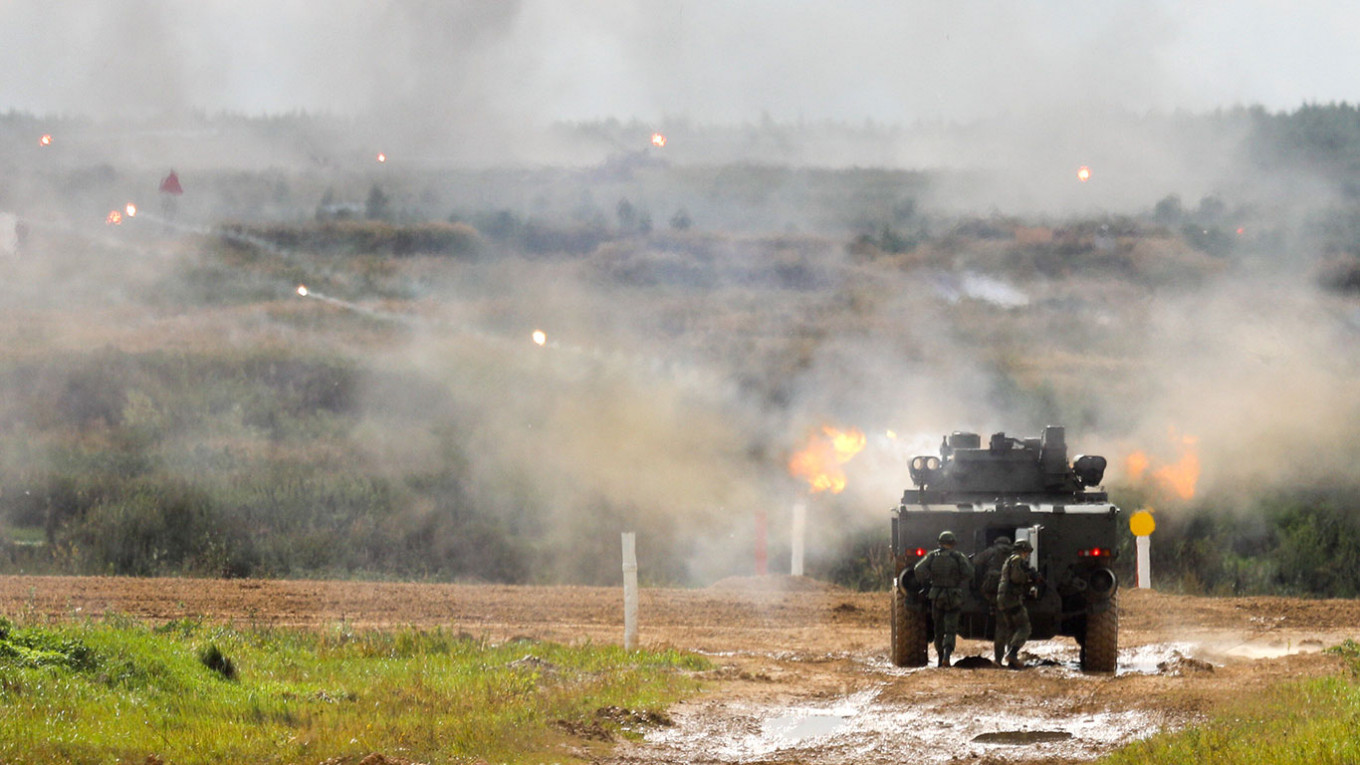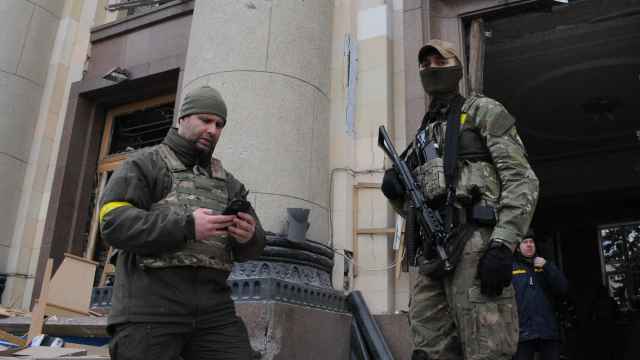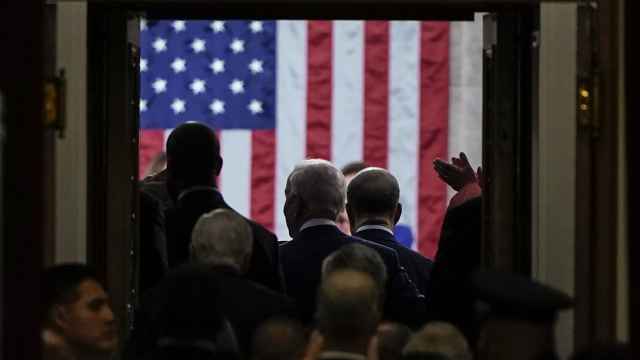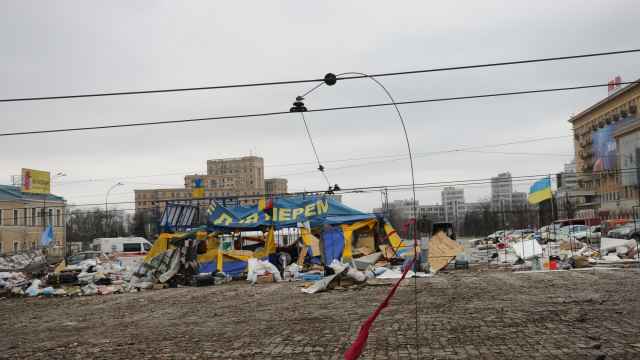One of the most asked questions in recent weeks has been whether Russia will attack Ukraine, despite a slight lessening of tensions in the wake of last week’s video call between the Russian and U.S. presidents. But how would ordinary Russians respond to a war with neighboring Ukraine?
Our 2015 research — “Do Russians Want War?” — showed that there is little enthusiasm for a “real,” large-scale war among members of Russia’s modern, urban society (the country’s military operations in Syria and eastern Ukraine in recent years were not seen as real wars).
The military action in Donbas in 2014, which took place against the backdrop of the triumphal seizure of Crimea, was viewed very positively by the Russian public. As soon as it became clear that Donbas was a different form of operation to Crimea, however (far bloodier and more destructive), public opinion went on the defensive: “Russia has nothing to do with it, the United States and Ukraine are to blame for all the loss of life, and there’s no real war under way in any case.”
A very similar sentiment dominates today: a recent survey showed that 50 percent of respondents blame the United States and NATO for the worsening situation in Ukraine (16 percent blame Ukraine itself). Only 4 percent consider Russia to be responsible for escalating tensions.
For a few years, the unprecedented patriotic surge of 2014 served as symbolic compensation for the socioeconomic problems that had already begun. Russians lapped up the real and imaginary threats that were fed to them, and generally assessed military action as justified, defensive, and/or preventative.
These wars took place in the background: TV reports did not dwell on the brutal and bloody reality of armed conflict. At the same time, the militarization of official rhetoric and the growing authority of the army — which overtook the presidency in a list of most trusted institutions in 2020 — strengthened the so-called “Crimea consensus.”
The sociological parameters began to change in 2018, however, with the dissipation of the rallying-around-the-flag effect. If in 2014 26 percent of respondents said that “Russia was surrounded by enemies on all sides,” then that opinion was shared by just 16 percent in 2020. The number of Russians who believed it was futile to look for enemies because “the root of the evil was Russia’s own mistakes” rose from 17 percent to 25 percent in the same period.
The Crimea consensus and the symbolic might of state institutions remained, but they lost their power to mobilize. War started to frighten people.
The average Russian is tired of self-deception and of persuading themselves that if a war does happen, it will not impact their lives or those of family members. Russian conformists are, of course, traditionally bellicose people, but theirs is the bellicosity of propaganda television talk shows, or the language of online hate. No conformists want a large-scale war: conscription is not part of the social contract, particularly at a time of accelerating inflation and economic stagnation.
State propaganda has overused its powers of mobilization. Instead of mobilization, it has created a fear of world war. At the end of 2018, 56 percent of respondents to a Levada Center survey said there was a significant military threat from other countries. This year, the fear of a world war has increased dramatically, reaching a solid second place in a Levada Center list of the top issues causing Russians to worry. The other fears that have risen in parallel with that of war are those of an increasingly harsh political regime, mass repression, and arbitrary rule: the authoritarianization of the Russian political regime has not gone unnoticed.
It’s symptomatic that the worsening of the public mood has gone hand in hand with a fall or stagnation in the approval ratings of the president and the authorities overall. The year 2018 was a pivotal moment in this process. To a large extent, it was the move to raise the retirement age that destroyed the classic Putin-era social contract: “you provide for us and leave our Soviet-style social handouts alone, and we’ll vote for you and take no interest in your stealing and bribe-taking.” A high level of support for Putin in the 2018 presidential elections was mistakenly interpreted by the authorities as real political credit, rather than indifference and mostly symbolic trust.
The pandemic has only confirmed this bifurcation in attitudes toward the authorities: we support the symbols — the flag, the national anthem, and Putin as a representation of our geopolitical might — but we don’t trust specific initiatives and the actions of government at various political levels. This sort of mute dissatisfaction was visible during the 2021 parliamentary elections, when people voted for the Communist Party as an abstract alternative to the current authorities.
There is one final aspect to this problem. When people talk about a war, they mostly mean a conflict with Ukraine (even if it would involve NATO, the United States, and the West). Of course, if war breaks out, state propaganda will convince most Russians that it’s necessary, and that we are, in fact, “liberating” our Ukrainian brethren from an alien government (even if Ukrainians chose that government themselves in free elections). This will all take place despite the fact that in 2021, 23 percent of Russians believed Russia and Ukraine should be friendly neighbors but still have their own borders: only 17 percent of respondents supported a unification of the two states.
War is the business of young people and conscripts. But 66 percent of Russians aged between 18 and 24 have a positive or very positive attitude toward Ukraine. That’s despite a backdrop of unceasing vitriol directed toward Ukraine on state television, and the persistent, oft-repeated idea that it is external attacks that require Russia to take defensive measures.
To put it simply, before launching an offensive, it’s worth thinking about who will fight in that offensive and how willingly, and to what extent an active conflict will prompt people to rally around Putin. The evidence suggests that even in the best-case scenario, the mobilization effect will be nonexistent.
This article was first published by the Carnegie Moscow Center.
A Message from The Moscow Times:
Dear readers,
We are facing unprecedented challenges. Russia's Prosecutor General's Office has designated The Moscow Times as an "undesirable" organization, criminalizing our work and putting our staff at risk of prosecution. This follows our earlier unjust labeling as a "foreign agent."
These actions are direct attempts to silence independent journalism in Russia. The authorities claim our work "discredits the decisions of the Russian leadership." We see things differently: we strive to provide accurate, unbiased reporting on Russia.
We, the journalists of The Moscow Times, refuse to be silenced. But to continue our work, we need your help.
Your support, no matter how small, makes a world of difference. If you can, please support us monthly starting from just $2. It's quick to set up, and every contribution makes a significant impact.
By supporting The Moscow Times, you're defending open, independent journalism in the face of repression. Thank you for standing with us.
Remind me later.








